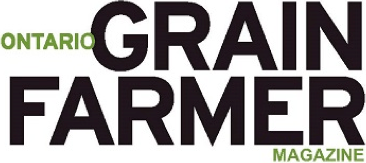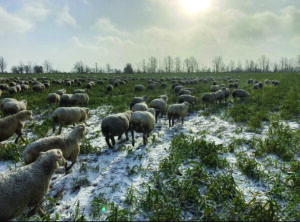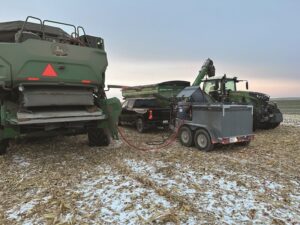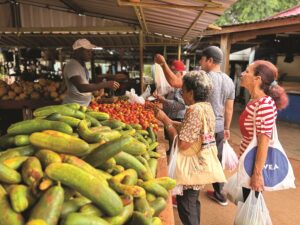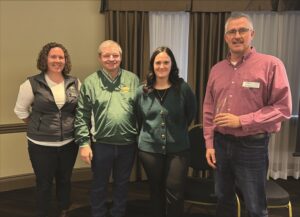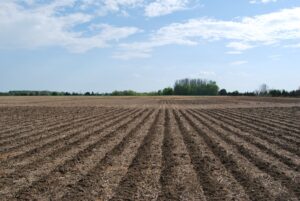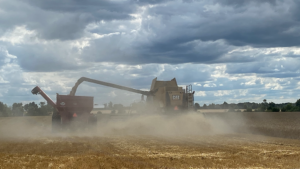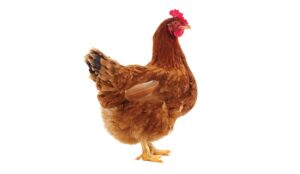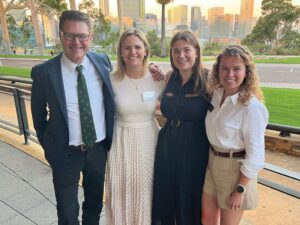Weathering the storm
How U.S. research funding cuts impact Ontario science

Sweeping funding cuts and indiscriminate firings across a wide range of government departments in the United States marked the first few months of Donald Trump’s second presidential term. Crop-related research at land-grant universities, avian flu monitoring and prevention efforts, weather monitoring services, and other areas within agriculture have been directly impacted.
U.S. budgetary cuts impacting the U.S. bureaucracy and scientific research communities could have secondary effects abroad, including in Canadian agricultural research and monitoring.
GRAIN FARMERS OF ONTARIO- FUNDED RESEARCH
The good news—Grain Farmers of Ontario initiatives, such as the cross-border Yield Enhancement Network (YEN) challenge and Research and Innovation Department-funded projects, are unaffected by chaos south of the border. Josh Cowan, research and innovation director, says Grain Farmers of Ontario has not “run into much in the way of direct issues tied to cross-border connections” because does not have “many projects that cross the border.” Similarly, senior agronomist Marty Vermey says the YEN program remains unaffected despite the participation of American farm groups.
“Our U.S. counterparts are aware of funding changes in the U.S., and it does not affect the program, but it does put pressure on researchers. The YEN is run by the farmer organizations—Michigan Wheat Program and Grain Farmers of Ontario—so as long as the boards of these grower organizations are in favour of the program, it will continue and be supported by extension staff.”
Inquiries were also made to several agricultural researchers at the University of Guelph regarding the impact of White House actions. Respondents similarly indicated that their work has not been affected, although several expressed knowledge of friends and colleagues in the U.S. who are facing very hard and uncertain times.
DEGRADED WEATHER PREDICTION CAPACITY
While the Trump administration’s drastic funding cuts may not be directly impacting Ontario farmers and many agriculture researchers, there are indirect impacts. For example, reduced capacity to track and manage the spread of diseases in livestock— such as avian influenza, the leading current example—increases the risk of outbreaks in Canada.
The National Oceanic and Atmospheric Administration (NOAA) has also seen significant funding reductions. As the Council on Foreign Relations details, many of the agency’s core functions are impacted, including ocean monitoring, regional and coastal planning, climate research, and weather forecasting. Council on Foreign Relations author Alice Hill writes staffing cuts have, by May 23, 2025, “already curtailed the daily launch of weather balloons that collect weather data and left some NOAA offices without forecasters on-site overnight. Meanwhile, a backlog of unsigned NOAA contracts has hampered the agency’s operations, including initiatives designed to help communities prepare for extreme weather.”
“Impacts from budget and staff cuts to NOAA extend beyond U.S. borders. They will disrupt the data collection fundamental to climate research and modelling as well as degrade international forecasting and climate assessment capabilities.”
BARRING ACCESS TO DATA
James Macklin, Ottawa-based botany and biodiversity research scientist with Agriculture and Agri-Food Canada, confirms Canada is one such forecasting partner, and that many of his research colleagues are concerned. While the curtailing of NOAA’s analysis and prediction capacity is worrying, Macklin identifies another threat— data access—as another particularly concerning move.
The issue relates to Canada’s “data sovereignty” and data infrastructure, specifically how much digital scientific information is held domestically.
Canada, says Macklin, holds a “reasonable” level of data infrastructure. But like many countries around the world, Canadian researchers also rely on data sets and analysis software created by and held in other countries, the U.S. being a critical source of scientific data across government, academia, and industry. The idea for such data sharing is to not “build silos” between countries, research fields, and such like, but to share scientific information for “the good of everybody” regardless of where they live.
“Everybody being fairly generous, that’s made us a happier world,” says Macklin. Now, however, many Canadian researchers are concerned that the U.S. government will block access to critical data sources. Rumblings of such actions have already been heard regarding weather and geospatial information. There is also concern about future access to the National Center of Biotechnology Information, which Macklin says houses “a huge repository” of genomic information and analysis tools across all of science.
“This is relied on by everybody, everywhere,” he says. The good news is that copies of the repository are held in Europe and Japan. The bad news is that the tools and services offered through the National Center for Biotechnology are unique to the United States.
“You’d have to change a lot of the way you do your work in order to use the resource from those other places. That’s not insignificant…It touches federal science, academic science, industrial science. It’s kind of been a nice thing for us to get together and talk.”
The threat of data loss, or loss of access, has spurred more conversations about data onshoring in Canada. The question, Macklin says, is determining “what do we need to have a copy of and keep inside for sure, versus trusting our friend out there?” While keeping more vital digital information within Canadian borders is possible, he adds, constructing the infrastructure required to do so—data centres, and the capacity to power them—would require significant investment.
“You can’t build those overnight. The power it takes to generate and run those things brings concerns both financial and environmental,” Macklin says.
“The world has changed, and now, unfortunately, the ‘I trust my brother’ is starting to fall apart a bit, which means more investment on our side, probably.” •
